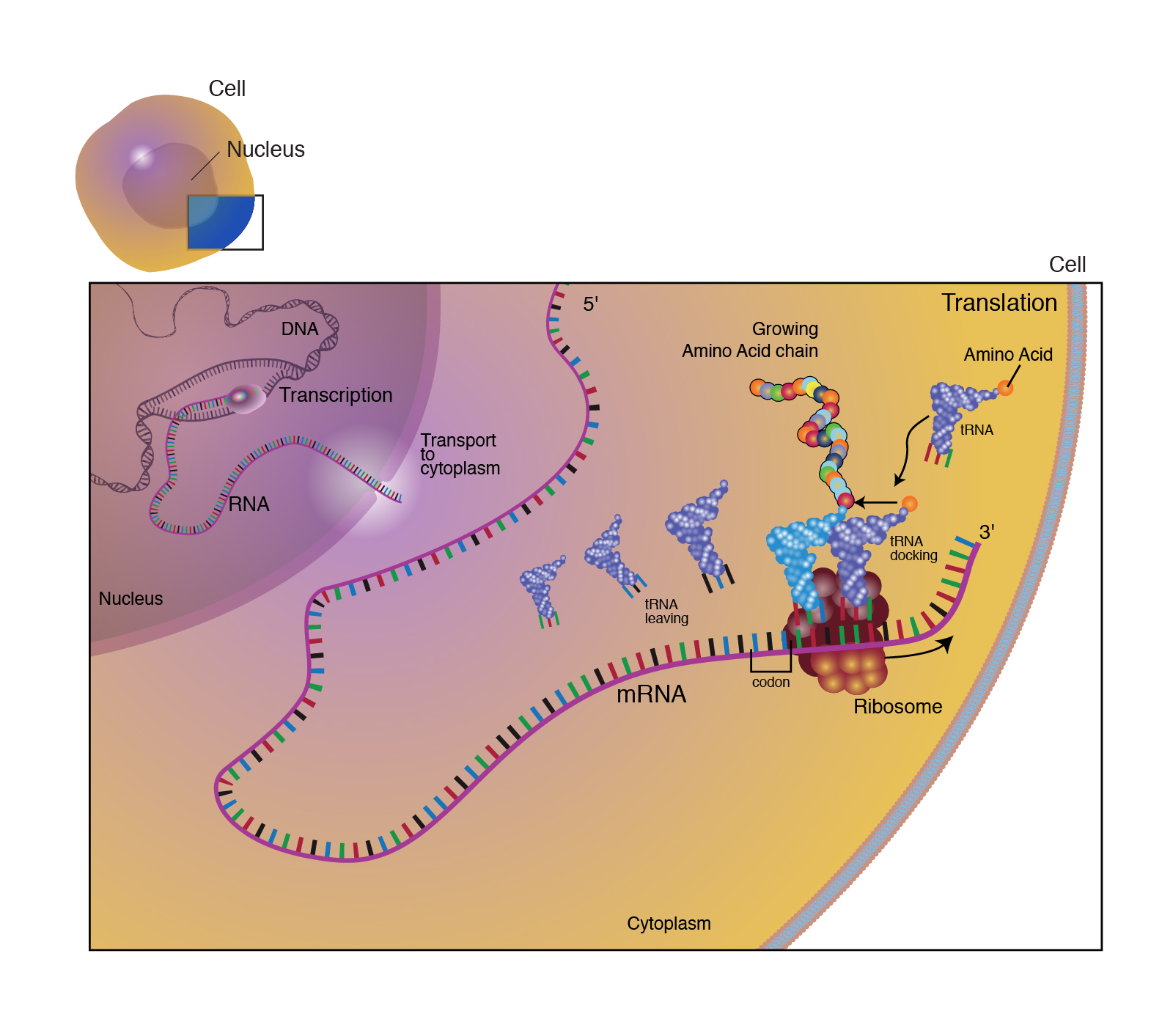

RNA polymerase III is also located in the nucleus. RNA polymerase II is responsible for transcribing the overwhelming majority of eukaryotic genes. Eukaryotic pre-mRNAs undergo extensive processing after transcription but before translation. RNA polymerase II is located in the nucleus and synthesizes all protein-coding nuclear pre-mRNAs. (Note that the “S” designation applies to “Svedberg” units, a nonadditive value that characterizes the speed at which a particle sediments during centrifugation.) RNA polymerase I synthesizes all the rRNAs from the tandemly duplicated set of 18S, 5.8S, and 28S ribosomal genes. RNA polymerase I is located in the nucleolus, a specialized nuclear substructure in which ribosomal RNA (rRNA) is transcribed, processed, and assembled into ribosomes. This is in contrast to prokaryotes, which regulate genes in an operon structure where one mRNA may be polycistronic and encode for multiple protein products. In eukaryotes, a single gene will produce one gene product as all genes are regulated independently. CAAT or GC box and enhancers or repressors (for eukaryotic transcription), which help modulate the amount of transcript produced in any given cell.TATA box, which provides an accessible region for the DNA to begin to unwind, allowing for access by the transcriptional machinery, and.The regulatory or promoter region is upstream of the transcriptional start and contains regulatory elements such as: Figure 11.2: Schematic view of a eukaryotic gene structure.

The transcribed region is typically (but not always) downstream of the transcriptional start and contains the following DNA elements: a 5ʼ cap site (required for maturation of mRNA), translational start (AUG), introns and exons, and the polyadenylation site (figure 11.2). These are specific locations on a chromosome that are composed of a transcribed region and a regulatory (or promoter) region.

The chromosome is organized into functional units call genes. The transcribed mRNA will serve as the template for protein translation. The 5ʼ to 3ʼ strand of a DNA sequence functions as the coding ( nontemplate) strand for the process of transcription such that the transcribed product will be identical to the coding strand, except for the insertion of uracil for thymidine (figure 11.1). Unlike DNA synthesis, which only occurs during the S phase of the cell cycle, transcription and translation are continuous processes within the cell. However, the translation to protein is still systematic and colinear. The translation to protein is a bit more complex because three mRNA nucleotides correspond to one amino acid in the polypeptide sequence. The copying of DNA to RNA is relatively straightforward, with one nucleotide being added to the mRNA strand for every nucleotide read in the DNA strand. Because the information stored in DNA is so central to cellular function, it makes intuitive sense that the cell would make mRNA copies of this information for protein synthesis, while keeping the DNA itself intact and protected. The decoding of one molecule to another is performed by specific proteins and RNAs.

The flow of genetic information in cells from DNA to mRNA to protein is described by the central dogma, which states that genes specify the sequence of mRNAs, which in turn specify the sequence of amino acids making up all proteins.


 0 kommentar(er)
0 kommentar(er)
